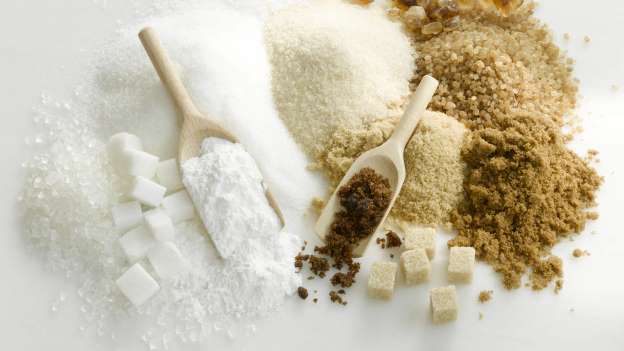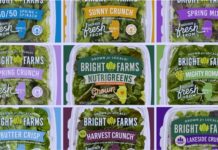Trying to cut back on added sugar? It may require a little more sleuthing than you think. That’s because the sweet stuff is hiding in countless foods (from soup to tomato sauce!) under sly aliases like “brown rice syrup” and “evaporated cane juice.”
But with some basic knowledge of food label lingo, you can start picking out those sneaky ingredients—and slashing your daily intake. From now on, whenever you pick up a packaged product, turn it over and scan the label for any of the code words below. While some of the sweeteners are slightly better for you than others (hi, molasses), at the end of the day, they all count as added sugar.
Coconut sugar and date sugar
These terms often pop up on the labels on natural foods. Coconut sugar is made from sap extracted from the buds of coconut palm plants. And date sugar is typically made simply from dried, ground dates. But don’t be fooled: While a whole food source may seem like a much more nutritious option, the amount of nutrients in a teaspoon of any type of sugar is generally minimal at best.
Brown rice syrup—and any other kind of syrup
High-fructose corn syrup isn’t the only syrup to watch out for. Syrup can be made from brown rice or rice, barley, sorghum, and maple (of course). The process to make these different syrups varies. Maple syrup, for example, is made by boiling sap from maple trees. Brown rice syrup, on the other hand, is made from cooking brown rice with enzymes that break down the starch; the liquid is then strained to produce a syrup. Regardless of how they’re made, however, all syrups count as added sugar. (That said, I am partial to maple syrup. One tablespoon satisfies about 25% of your daily recommended intake of manganese, a mineral that helps produce collagen and promote skin and bone health.)
Molasses
Because of its dark color and full-bodied flavor, molasses often shows up in cereals and baked goods. This thick syrup is a byproduct of processing sugarcane and sugar beets. (It’s what’s left over after the sugar has crystallized.)
You might see “blackstrap molasses” on the labels of some healthy-looking foods. This is the syrup that remains after the maximum amount of liquid has been removed, and it actually does provide some nutrients: One teaspoon contains about 6% of the Daily Value for iron and calcium. And it packs more antioxidants than any other sweetener, according to research from Virginia Tech.
Words ending in –ose
The Latin suffix –ose is used in biochemistry to name sugars. There are many that appear on food labels: Think glucose, sucrose, maltose, lactose, fructose, dextrose, galactose, and maltose. Some of these sugars are found naturally in whole foods, such as fructose (in fruit) and lactose (in milk). But beware: When any of these -ose terms are listed in a product’s ingredients, it’s just another word for “added sugar.”
If all this detective work seems like a pain, here’s some good news: The FDA has mandated that by 2020, all food manufacturers are required to list the amount of added sugar (in grams and as percent Daily Value) right on the label. So you can make informed choices, no hunting and decoding necessary.




